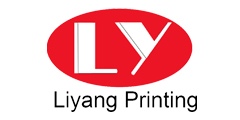The continuous improvement of social productivity has promoted the rapid development of the modern packaging industry, resulting in a large number of modern packaging and short life. Most of the modern packaging products are disposable consumer goods. The cycle from raw material to product molding, consumption, and disposal is short. Most of the products are in the hands of consumers and the life of the packaging is over. The resulting packaging waste causes environmental damage. Huge pollution has seriously affected the quality of human life. According to statistics, the environmental pollution caused by packaging waste is second only to water pollution, oceans, lakes and air pollution. Therefore, through the establishment of relevant laws and regulations to force reduction in the generation of packaging waste, while improving and improving its recycling and utilization technology, has become a global issue of common concern. This article attempts to classify the packaging waste according to its materials, and to study the respective recycling and utilization.
First, the recycling and utilization of paper packaging waste
The fastest growing paper packaging materials in packaging materials have become the focus of development and utilization because of their obvious ecological benefits and economic benefits. At present, for paper-based packaging waste, recycling papermaking and new product development are usually used for recycling.
1, paper packaging waste recycled paper
Recycling of waste paper There are two main processes: pulping and papermaking. The pulping process is: smashing, purifying, screening and concentrating; the papermaking is to convey the waste pulp to the paper machine, pass through the net, press, dry and calender, to make the tube paper or flat paper.
1 Disintegration of waste paper
After the waste paper is initially selected, it is generally disintegrated by a hydraulic pulper.
2 Screening, desorption of waste paper, and screening after disintegration of concentrated waste paper The main purpose is to remove debris from the waste paper after shredding using a rotary screen (10mm aperture) and 25L mesh (2.5mm diameter). , wood chips, nylon ropes, gutters, etc.). Skeletonization is to disintegrate the partially disintegrated waste paper (for example, around the staple) from the disintegrator, and further separate the remaining ink on the pulp fibers. Concentration is the use of concentration equipment (such as a rotary screen concentrator, a vacuum filter, a pour filter, etc.) to dewater concentrate the low consistency pulp.
3 Slurry to asphalt, hot melt adhesives and other debris
If the slurry contains bitumen and wax, it needs to be heated and melted, and then it is evenly dispersed in the slurry with a cyclone separator. Because the dispersion is fine, the finished paper is not easily noticeable. In the papermaking process, the hot melt adhesive in the slurry will block the mesh, the dirty dye roller, and the drying cylinder, resulting in the occurrence of paper breakage. Therefore, the thermal dispersion method, the cold screening method, and the thermal spraying method are used to remove the hot melt adhesive. .
4 Waste paper deinking
Deinking of waste paper is usually carried out in a batch-operated hydrapulper. In order to achieve a good deinking effect, the following issues must be noted; the order of addition; the deinking agent is first added to the hot water in the pulper, and the waste paper is added after dissolving; the temperature is increased to promote ink diffusion (due to the nature of the waste paper. Different from the deinking agent, the low temperature is about 40-600°C, and the high temperature is about 80-900°C); extend the time properly to promote waste paper disperse and ink dispersion (usually the deinking time per pulp is 1~1.5h; timely washing The deinked slurry prevents fibers from turning back.
5 pulp bleaching
After the waste paper is stored for a period of time, the whiteness of the fiber will decrease, and the deinked pulp will need to be bleached to restore the original whiteness. The factory bleached the pulp with a bleacher. When the bleaching agent is bleaching powder, the content of available chlorine is 7%, and the bleaching time is about 2 hours. If you want to improve the whiteness of waste pulp, you can also take the following measures: First, strengthen the washing and screening of microfibers; Second, according to the length of fiber bleaching; Third, the use of enzyme pretreatment before bleaching.
Pulp preparation, activation and sizing, filling, color mixing, reinforcement and papermaking processes are basically the same as those of ordinary papermaking, and will not be repeated here.
2, paper packaging waste development of new products
1 Manufacture of pulp molded products
Pulp molded products are made of waste paper pulp without debris through vacuum modeling, hydraulic modeling and air compression molding, and they are quickly and uniformly deposited on a mesh model, and then compressed and dried. The process flow includes: waste paper sorting, grinding and beating, formulating ingredients, pulp sizing, blending concentration, product forming, cold extrusion and shape correction. The product is widely used in the packaging of egg products, fruits, glass and the like because of its characteristics of light weight, low cost, shock resistance, good air permeability, and no pollution to the environment.
2 Manufacture of composite board waste paper can produce high-strength glued cardboard by using waste paper and phenolic or urea-formaldehyde resin together (press temperature of phenolic resin is 170°C, press temperature of urea-formaldehyde resin is 140°C). . Waste paper can also be used to make asphalt corrugated boards by molding raw materials such as waste paper, cotton yarns, coconut fibers, and asphalt. The product has good heat insulation, water impermeability, light weight, fire resistance and corrosion resistance and can be used as building construction materials.
3 manufacture of paper paste
The use of waste paper scrape to produce a strong adhesive paste, the method is to clean the non-ink paper (1 part) into sodium hydroxide (0.1 parts) soak for 24h, dissolved by stirring, then add chloroacetic acid ( 0.35 parts) and sodium carbonate (0.1 part) are added and the mixture is finally stirred with water. To prevent mildew and discoloration, a small amount of hydrochloric acid can be added to adjust the pH to neutral.
4 Production of livestock feed
Waste paper can produce livestock feed. The method is to chop the waste paper, add water and 2% hydrochloric acid, then boil it for 2 hours. Under the action of high temperature and acid, cellulose will decompose and fracture, and then add to the feed (the amount added 20% to 40%), used to feed animals such as cows and sheep, its nutritional effect is 1/3 higher than that of normal feed. Cattle and sheep fed on this diet have less disease and more longevity.
(to be continued)













